What do we know about the history of the land currently owned by the Town of Woodbridge and operated today as the Country Club of Woodbridge? An article in the New Haven Register back around the time of the Town’s purchase in 2009 tells a portion of the tale of the founding of the former “Woodbridge Country Club” in the 1940s:
“The land near Johnson Road that is now home to the WCC once was an abandoned golf course that was constructed partially in 1931, then finished in 1935. The first club thrived until World War II began, then closed.
Shapiro said her father and 100 other men bankrolled the revival of the course, which had been overgrown. A clubhouse soon was created, and fire twice burned it down. The club thrived until the 1980s and since then the number of members has declined and debt escalated into the millions, now threatening its future.”
But what of earlier times? Let’s assemble some clues!
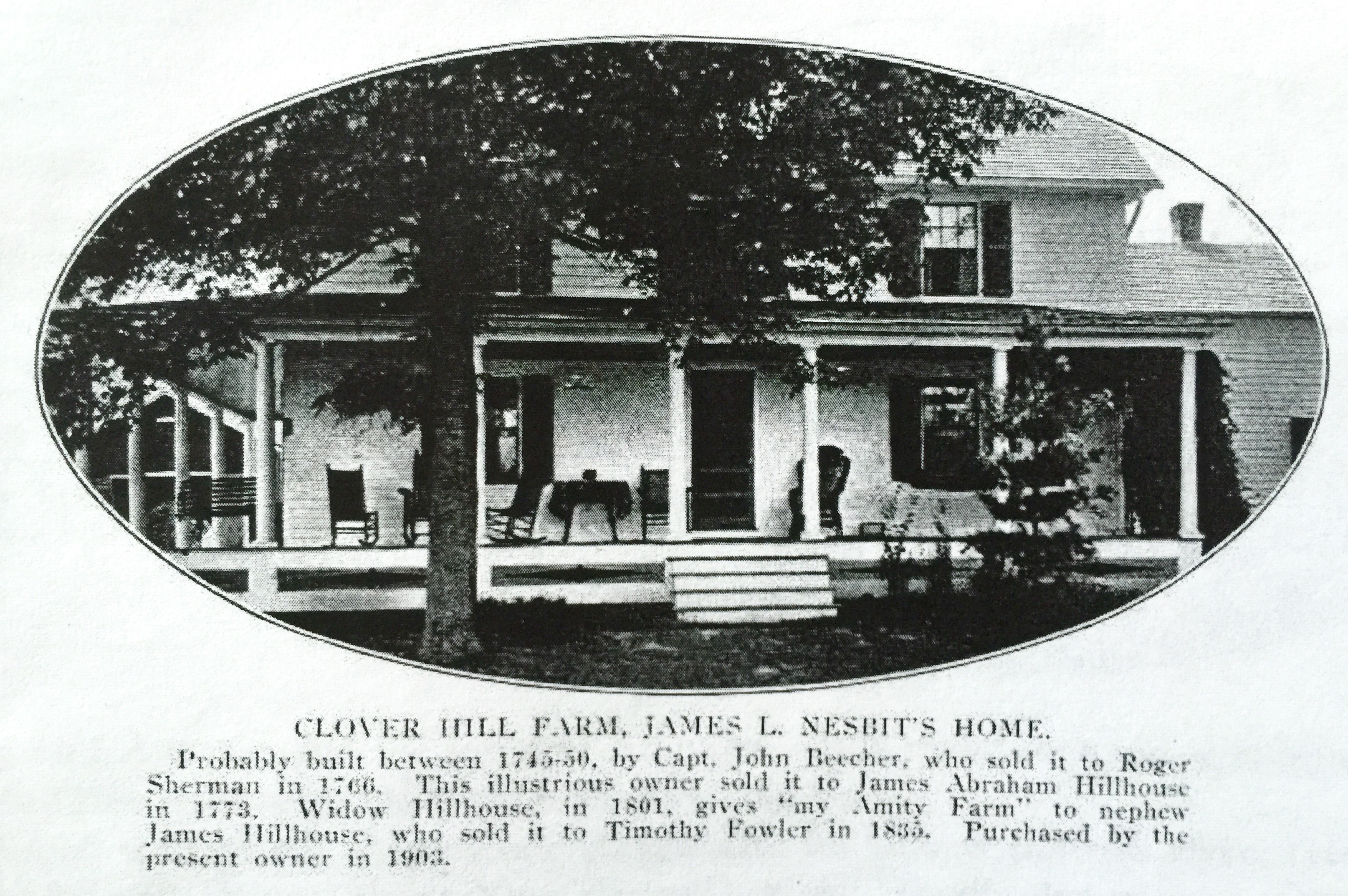
Here is the ‘James L. Nesbit Home’ as it was featured on page four of the book Woodbridge Hills, published in 1911 by the the Woodbridge Civic Association. James was born in Babylon, New York in 1859 and according to his obituary in the New York Times had been “for half a century a horse breeder’ when he died in his home in Woodbridge in 1935. He is buried in Westville Cemetery. The caption under this photo of his house reads:
Probably built between 1745-50, by Capt. John Beecher, who sold it to Roger Sherman in 1766. This illustrious owner sold it to James Abraham Hillhouse in 1773. Widow Hillhouse, in 1801, gives “my Amity Farm” to nephew James Hillhouse, who sold it to Timothy Fowler in 1835. Purchased by the present owner in 1903.
My, what a collection of historical figures we have in that short paragraph! Let’s begin with Captain John Beecher — he has quite a tale to tell us…
Who was Captain John Beecher?
Referred to here as John Beecher, Jr., he was actually the third in succession to bear this name and was born on September 5, 1722 in New Haven. He was a great-grandson of Isaac Beecher who was born in Kent, England in 1623 and arrived in the New Haven colony in 1638 with his widowed mother. In 1645 Isaac married Mary Sperry, a sister of Richard Sperry who we know as the first European settler to live in present-day Woodbridge, then a part of the New Haven Colony. Isaac and Mary Beecher named the firstborn of their five sons John (1645-1712) after Isaac’s father, who was the first European settler to die in the New Haven Colony — here is a recounting of that story, taken in part from the History of the Colony of New Haven, page 42:
The Beecher family finds its beginnings in Kent, England in 1594 with the birth of John Beecher. John was the first Beecher to arrive in the New World, arriving on the ship Hector in 1637. John did not survive the first winter. Wife Hannah arrived the following spring with her son Isaac, and found her husband had been buried in an unmarked grave.
“In the autumn of 1637, Mr. Eaton and others of the company made a journey to Connecticut, to explore the lands and harbors on the coast, and being pleased with the situation of Quinnipiack, they there determined to settle their colony. On what is now the south corner of Church and Meadow streets, they erected a hut, in which a few men remained during the winter.
Seven men were left by Eaton, four of whom were Francis Brown, John Beacher, Robert Pigg, and Thomas Hogg. One of the party died in the winter. In {the 175os}, when the cellar of the stone house on the corner of George and Meadow streets was dug, bones were found lying horizontally, almost entire. They were those of a large man, and believed to be the bones of this Englishman, as the Indians buried their dead in a different posture.”
So this original settler John Beecher was our John Beecher III’s great-great-grandfather. Four generations later, our John was the only child to be born to the marriage of his parents John Beecher, Jr. (1696-1724) and Mehitable Tuttle (1699-after 1779). When John III was just two years old his father John Jr. died. His mother who was 24 years-old when she became a widow, married Barnabus Baldwin, Jr. (1692-after 1779) two years later, and John was raised in the Baldwin household in Woodbridge with 8 half-siblings.
The children and grandchildren of Mehitable and Barnabus Baldwin, Jr. figure prominently in the history of Woodbridge and much more can be read about them in the new edition of Woodbridge History. Here is a list of Mehitable’s children from both marriages:

For more information, you can also view a chart showing two more generations of Mehitable’s descendants — including 46 great-grandchildren, many of whom continued to raise their own families here in Woodbridge through the 1800s. (To view the chart details, click once on the link above to open the image, and once it appears, click again anywhere in that window to enlarge the image and scroll around to read.)
Barnabus Baldwin Jr. owned many acres of land in the vicinity of the present-day Ansonia Road, stretching from Racebrook Road all the way to the intersection of Ansonia and Rimmon roads where Fountain Street ends.
Barnabus granted property to John Beecher, his wife’s son from her first marriage, along with his other children, and this likely including the land where John built the house pictured above in the 1745 to 1750 timeframe. Other descendants of Barnabus and Mehitable also lived all along this road — see pages 29, 31, 35, 46, 47, 48 and 50 in the book Woodbridge History – 2nd Edition for details.
Roger Sherman, James Hillhouse, and subsequent owners
According to the 1911 entry in Woodbridge Hills, in 1766 John Beecher sold his home on Ansonia Road to Roger Sherman. This “illustrious owner” is, of course, the well-known Founding Father:
Roger Sherman (April 19, 1721 – July 23, 1793) was an early American lawyer and statesman, as well as a Founding Father of the United States. He served as the first mayor of New Haven, Connecticut, and served on the Committee of Five that drafted the Declaration of Independence, and was also a representative and senator in the new republic. He was the only person to sign all four great state papers of the U.S.: the Continental Association; the Declaration of Independence; the Articles of Confederation, and; the Constitution.
Born and raised in towns near Boston, Massachusetts, after his father’s death in 1741 his family moved to Connecticut, first settling in New Milford and then arriving in New Haven by June of 1761. After his service in our nation’s capital, Roger was serving as Mayor of New Haven upon his death in 1793.
But what is his connection with Woodbridge? We know that he owned land in New Haven before the Revolution and his property was situated along the present-day Forest Road near the Hopkins School. Looking at a map, we can see the proximity of this area with the land currently occupied by the Country Club of Woodbridge.
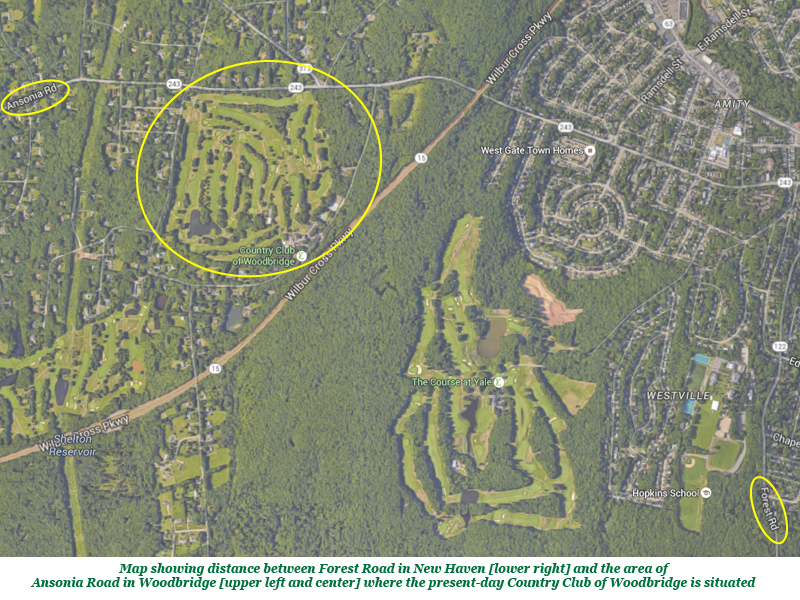
But there is a family connection to Woodbridge for Roger Sherman, as well. Let’s look back on some of the history of the Congregational Church, found in Reverdy Whitlock’s wonderful book, The Parish of Amity, on page 168:
“Reverend Josiah Sherman… eight years younger than his famed brother, the Honorable Roger Sherman” was selected to serve as minister in Woodbridge “early in the summer of 1789… [but the] contract died with Mr. Sherman only a few months later.”
Here is Josiah Sherman’s gravestone in Eastside Cemetery today, along with a description of his passing, below, quoted from the History of New Haven, Chapter VI, published in 1892:
The tombstone of Reverend Josiah Sherman, who died very suddenly while laboring with the church, has the following inscription: “In memory of Rev. Josiah Sherman, minister of the Gospel, Ob. Nov. 24 A D 1789, M. 60. The learned scholar, the eloquent orator, the exemplary Christian, the faithful pastor, the kind husband and parent, and the humble follower of Jesus Christ. Piety adorned his useful life and in the moments of a painful death enabled him to triumph in the hope of heaven. Much impressed himself and conscious of his awful danger, by him the violated law spoke its thunders and by him in strains as sweet as ever angels use the Gospel whispered peace.”
Going back to the chronology of the property, we see that Roger Sherman owned the land known then as Clover Hill Farm from 1766 to 1773 when he sold it to James Abraham Hillhouse. This was the uncle who raised the noted public servant, James Hillhouse. Here is a brief biographical sketch gathered from various sources:
“James Hillhouse (1754-1832) was born in Montville, Connecticut, the son of William Hillhouse and Sarah (Griswold) Hillhouse. At the age of seven, he was adopted by his childless uncle and aunt, James Abraham and Mary Lucas Hillhouse. He attended the Hopkins Grammar School in New Haven, Connecticut, graduated from Yale College in 1773, and practiced law in New Haven. He served as Yale’s treasurer for fifty years. During the Revolutionary War, Hillhouse served as captain of the Second Company of the Governor’s Foot Guard during the Tryon’s invasion of New Haven on July 5, 1779. Later, he was a member of the Connecticut House of Representatives (1780 to 1785), and elected as a United States Congressman from Connecticut (1791 to 1796), after which he was elected United States Senator serving from 1796 to 1810.” See Yaleslavery.org or more on his role as an Abolitionist.
James Hillhouse was also a driving force behind the creation of Grove Street Cemetery in New Haven in the aftermath of the yellow fever plague of 1794-95 during which it was recognized that continuing the practice of burials in the New Haven Green was having a negative impact on public health. Before this time, according to the history of the Grove Street Cemetery, “for the first one hundred-sixty odd years of her history, New Haven buried the dead in a common burying ground beneath and behind what is now Center Church on the Green.” It is notable that many of the original settlers of Woodbridge were buried in this common burial ground in New Haven, before the first burials in the Eastside Cemetery began to take place in the mid 1750s.
So, James Hillhouse received the property from his widowed adoptive mother in 1801, and held it until his death in 1832 apparently, after which it was transferred presumably by his estate, to the ownership of Timothy Fowler. This chain of ownership is also confirmed in a notation on the back of a photograph taken between 1935 and 1942 for a Works Project Administration (WPA) Architectural Survey of historic buildings, and included in the collection of the Connecticut State Library. Here is the photograph, entitled “Woodbridge Historic Building 023“:
Update April 2022: Let’s see this same location today — with a bit of magic, we can see an overlay of the WPA photo on a view of Ansonia Road near the intersection of Johnson Road taken by Google Streetview at the website ‘What Was There‘ (visit the site to use the fader option above the photo to slide from the 1930s to today).
Now, what else can we find to fill in the story on the next owner, Timothy Fowler?
The Fowler Family in Woodbridge
Well, look who we have here:
This image comes from a series of photographs in the collection of the Woodbridge & Amity Historical Society of people who called Woodbridge home in the 19th and early-20th century. The original photo of Timothy and Mary Fowler was photographed in the fall of 2014 along with a collection of more than a dozen albums of photographs belonging to a prominent family in town which were digitally photographed and cataloged and will become an important asset for the Historical Society as they are among the first entries in a digital catalog of items in their collection. Look for more information on this collection coming soon to the AWHS website.
Update April 2022: Can we connect this Timothy and Mary Fowler back another generation at this location? Why yes; what an intriguing little newspaper item from the summer of 1889 do we have here?
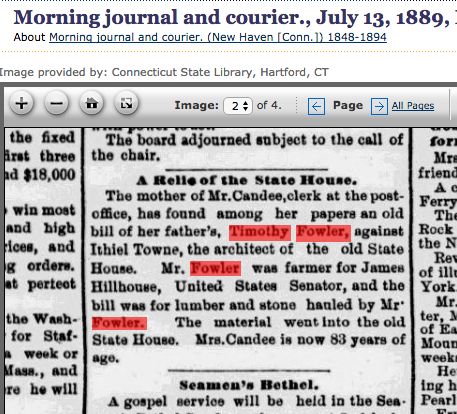 And who exactly are these characters? Glad you asked! Consulting my local genealogy notes, it seems “the mother of Mr. Candee” can be none other than Sarah Maria Fowler Candee (1805-1896), sister of the above Timmothy Fowler III (1814-1888). Her son, helpfully described here as employed as a clerk at the post office, must surely be Albert Timothy Candee — listed in his older brother George’s obituary in 1907 as “a stamp clerk in the New Haven postoffice.”
And who exactly are these characters? Glad you asked! Consulting my local genealogy notes, it seems “the mother of Mr. Candee” can be none other than Sarah Maria Fowler Candee (1805-1896), sister of the above Timmothy Fowler III (1814-1888). Her son, helpfully described here as employed as a clerk at the post office, must surely be Albert Timothy Candee — listed in his older brother George’s obituary in 1907 as “a stamp clerk in the New Haven postoffice.”
The news clipping describes Sarah finding a bill written out by her father, Timothy Fowler, Jr. (1778-1865), for lumber and stone he hauled for the renowned architect Ithiel Towne (1784-1844). The article notes that Timothy “was farmer for James Hillhouse, United States Senator” … so could this indicate that these materials, used in the construction of the old State House, came from this property in Woodbridge? Let’s think about the dates to see how these puzzle pieces might fit together.
The “old State House” designed by Towne, must refer to the one on the Green in New Haven (back when New Haven had been co-capital of the state), for which construction was begun in 1827 and finished in 1828. Hillhouse served as U.S. Senator through 1810 and likely continued to own the Clover Hill Farm in Woodbridge until his death in 1832. To further set the context, in the ‘History of the State House‘ published in 1889 the demolition of this grand old building is captured in lurid detail, complete with illustrations of ‘the Falling Columns’ of the north end of the structure, and finally, ‘the South End and West Side in Ruins.’
All the excitement was over by late June 1889, so Mrs. Candee may have been in a wistful frame of mind as she shared her family’s “relic of the State House” for publication in the July 13, 1889 issue of the Morning Journal Courier.

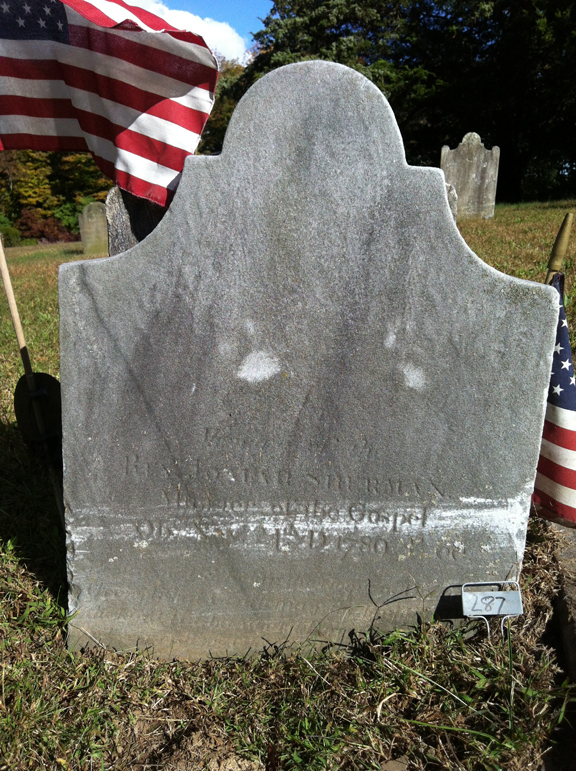
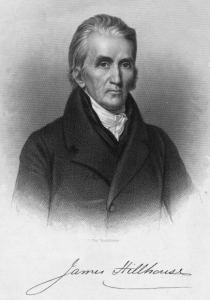
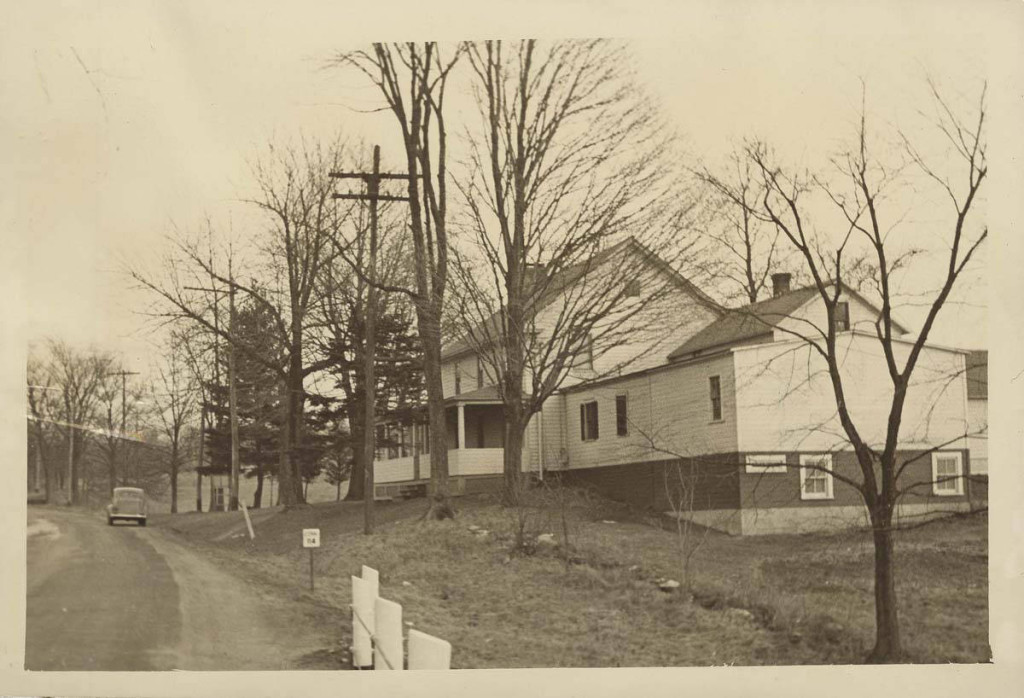
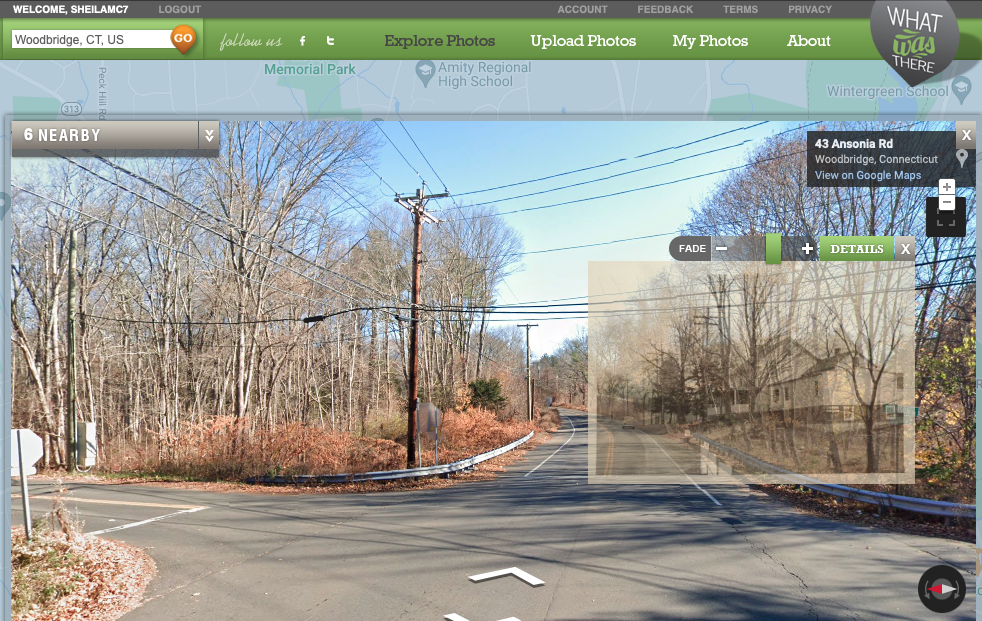
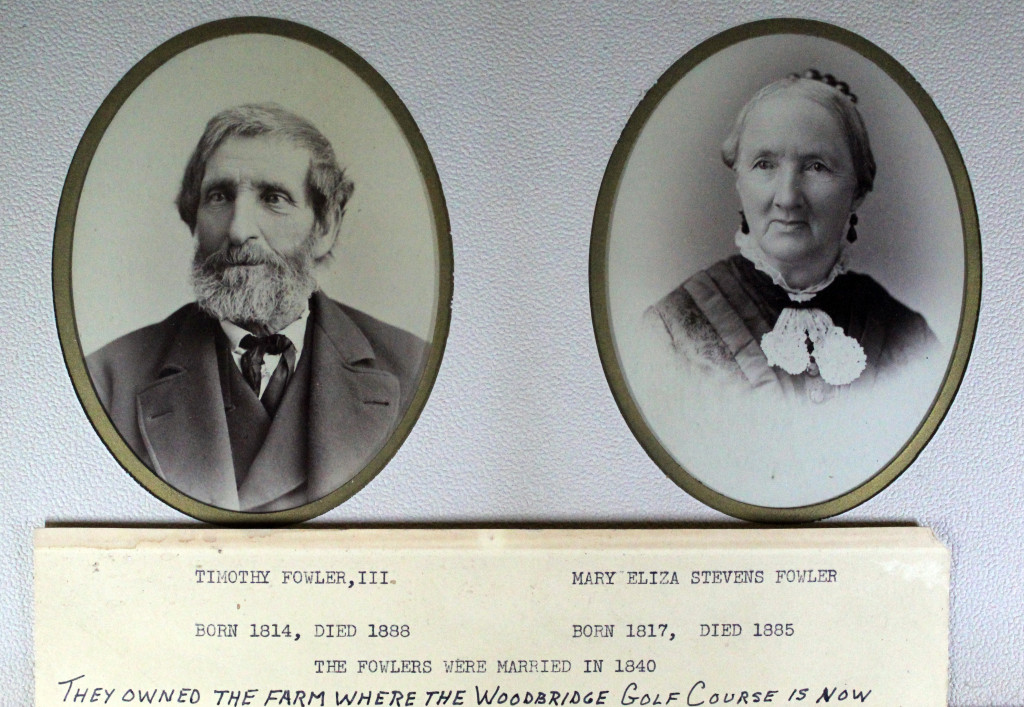
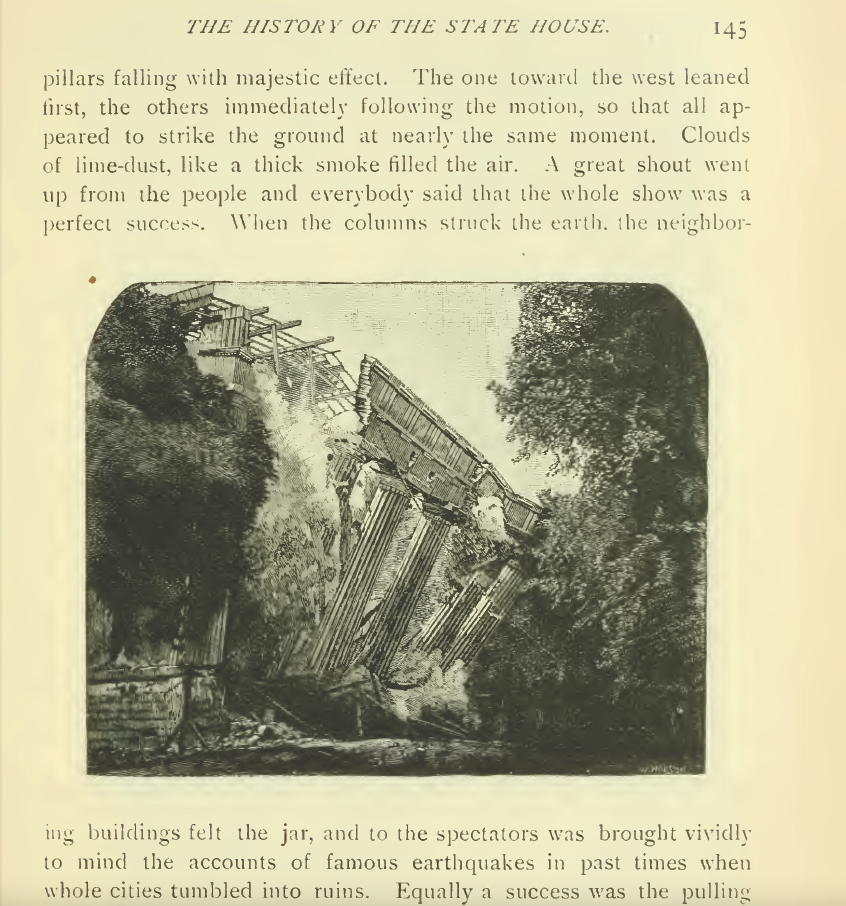
2 comments for “Clover Hill Farm: the former John Beecher-Roger Sherman-James Hillhouse property”